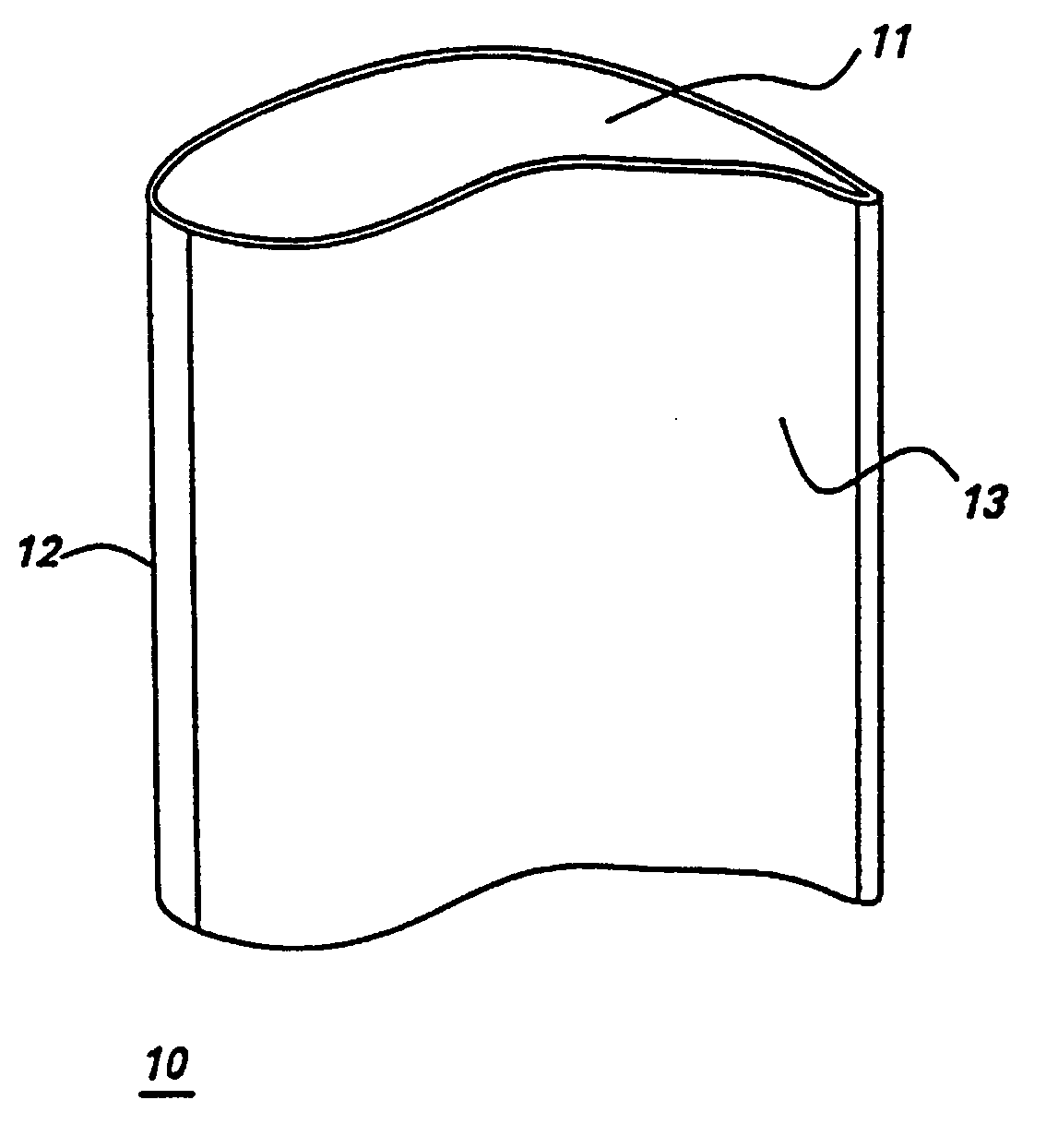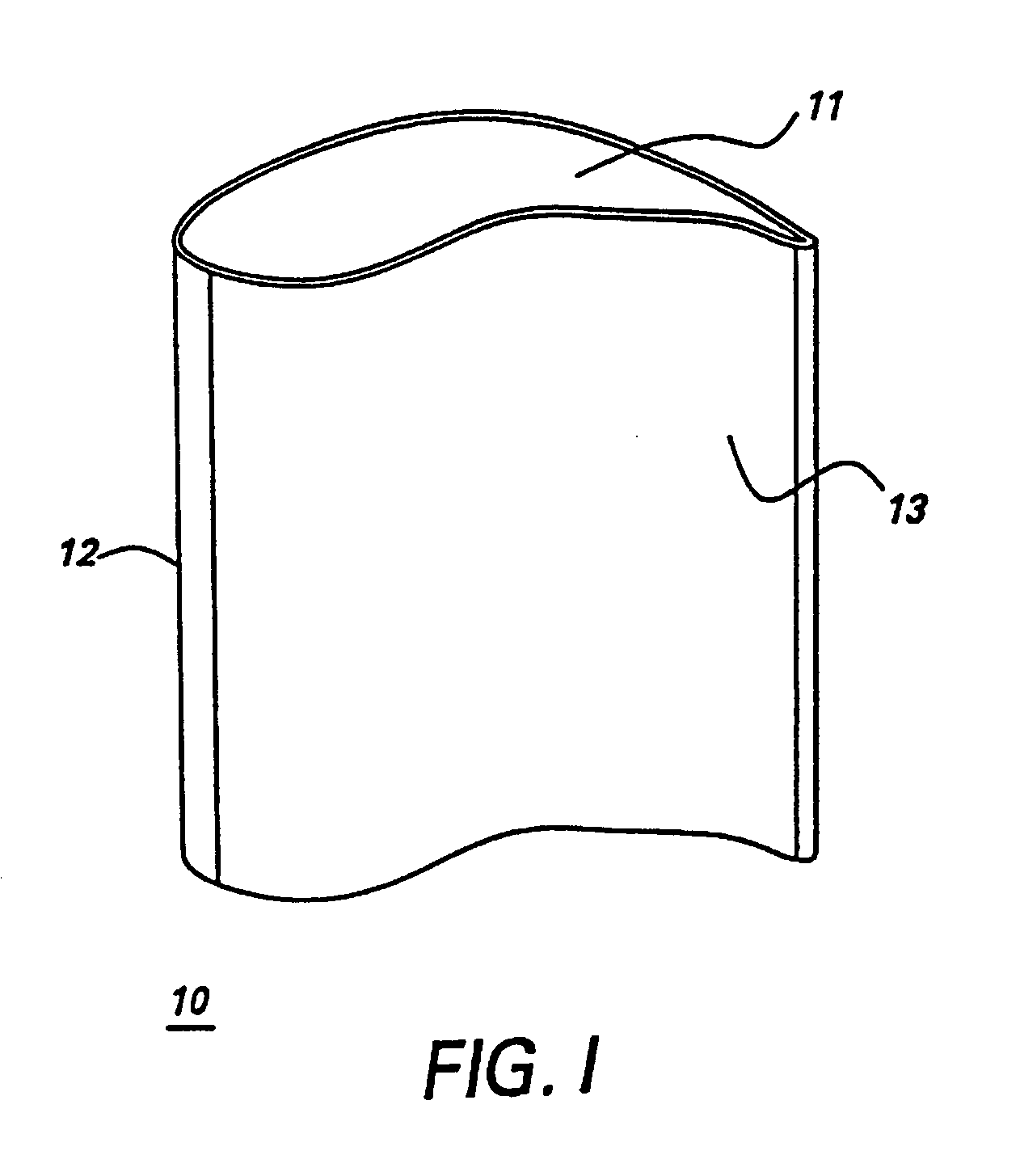The composition of the alloy of the present invention comprises a sufficient quantity of Ru to stabilize the HCP epsilon phase in favor of the face-centered cubic (FCC) phase commonly associated with
nickel-based superalloys and
refractory superalloys, and known in the art as the "gamma" phase. A small amount of FCC phase, such as, for example, up to about 15
volume percent, is acceptable in alloys of the present invention, but experience during the development of alloys of the present invention suggests that stabilizing the epsilon phase in favor of the gamma phase achieves desirable performance levels for a carefully selected array of properties, such as, for example,
oxidation resistance. In certain embodiments, the
ruthenium is present in an amount
ranging from about 20 atomic percent to about 40 atomic percent, the
chromium is present in an amount
ranging from about 10 atomic percent to about 28 atomic percent, the aluminum is present in an amount
ranging from about 12 atomic percent to about 24 atomic percent, and the balance comprises nickel, wherein the nickel is present in an amount of at least about 30 atomic percent. In particular embodiments, the
ruthenium is present in an amount ranging from about 20 atomic percent to about 25 atomic percent, the
chromium is present in an amount ranging from about 20 atomic percent to about 25 atomic percent, and the aluminum is present in an amount ranging from about 13 atomic percent to about 16 atomic percent. Maintaining Al and Cr at these levels allows thin,
protective oxide scale formation when the alloy is exposed to high temperatures, which enhances the ability of the alloy to
resist further oxidation. Additions of Cr also advantageously promote the stability of the .epsilon. phase in alloys of the present invention.
Some embodiments of the present invention provide for the addition of further alloying elements. In some embodiments, the alloy of the present invention further comprises up to about 1.5 atomic percent of a
metal selected from the group consisting of
zirconium,
tantalum,
hafnium,
niobium,
yttrium,
molybdenum, and mixtures thereof (herein referred to as "
transition metal strengtheners"); and up to about 10 atomic percent of a
metal selected from the group consisting of
platinum,
palladium,
rhodium, and mixtures thereof. The addition of
transition metal strengtheners achieves a certain amount of
solid solution strengthening, wherein the
transition metal strengthener remains dissolved in the .epsilon. phase and hardens the .epsilon. phase by straining the surrounding HCP
crystal structure. Additionally, as an alloy of the present invention comprising transition
metal strengtheners is exposed to air under high-temperature service conditions or during a heat treatment in air, the transition metal strengthener oxidizes to form a uniform dispersion of very small, very hard
oxide particles that reinforces the .epsilon. phase and provides significant high temperature strength.
In some of the above embodiments, the gas turbine engine component, whether a component under repair or newly manufactured, is a blade of an aircraft engine, a vane of an aircraft engine, a bucket of a power generation turbine engine, or a
nozzle of a power generation turbine. Referring to FIG. 1, in particular embodiments the gas turbine engine component comprises an airfoil 10, and the airfoil comprises the alloy. Specific embodiments provide that the airfoil 10 comprises at least one of a tip section 11, a
leading edge section 12, and a
trailing edge section 13, and wherein at least one of said tip section 11, said
leading edge section 12, and said
trailing edge section 13 comprises the alloy. As described above, the alloy of the present invention is joined to the component being repaired or manufactured by any of a number of suitable techniques, such as, for example,
welding and
brazing. Having only particular sections (i.e., those sections known to experience the most aggressive stress-temperature combinations) of the airfoil comprise the alloy of the present invention minimizes certain drawbacks of alloys comprising significant amounts of
platinum group metals such as, for example, ruthenium,
rhodium,
platinum, and
palladium, including their high cost and
high density in comparison to conventional airfoil materials. These drawbacks have a reduced effect on the overall component because the comparatively expensive and dense alloy of the present invention comprises only a fraction of the overall surface area of the component. The properties of the component are thus "tailored" to the expected localized environments, reducing the need for compromise during the
design process and increasing the expected operating lifetimes for new and repaired components.
 Login to View More
Login to View More 

